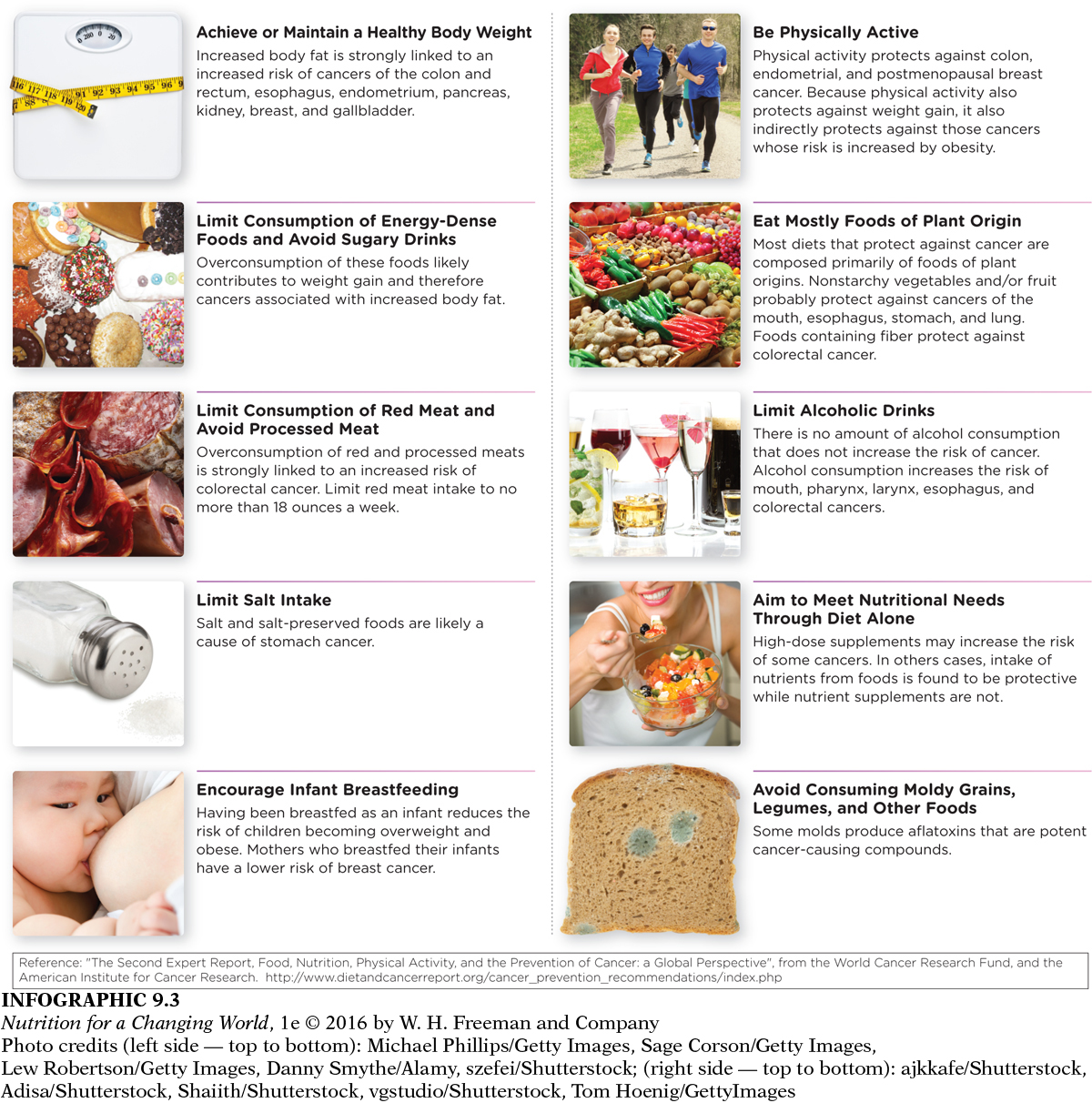HOW CANCER DEVELOPS
CANCER the uncontrolled growth or division of abnormal cells that invade a part or parts of the body
Studies find that plant-
Cancer is a group of conditions that result from the uncontrolled growth or division of abnormal cells that invade a part or parts of the body. Although scientists don’t fully understand how cancer develops, most agree that it is a multistep process. (INFOGRAPHIC 9.2)

Question 9.2
 The development of all cancers requires what initiating event?
The development of all cancers requires what initiating event?
The development of cancer requires the mutation of DNA to initiate its growth.
MUTATION a permanent change in the DNA sequence of a gene
METASTASIS during the process of cancer progression, mutated cells acquire additional mutations that allow the cancer cells to migrate to, and invade, other tissues
First, during the process of initiation, DNA inside a cell undergoes a mutation that alters the DNA sequence permanently. Any cells produced from the division of the mutated cell will also carry the mutation. Once a cell has been mutated, it is susceptible to the effects of promoters. During promotion, various factors (like inflammation or some chemicals) selectively promote these mutated cells to divide and proliferate more quickly than they should. Finally, in the process of progression, the mutated cells acquire additional mutations that allow the cancer cells to migrate to, and invade, other tissues (metastasis) where they can form new tumors that disrupt the function of body organs and tissues.
Although many cancers are influenced by genetic factors, cancer risk is also affected by environmental factors, including lifestyle choices—

Question 9.3
 In what area do you see the greatest need for improvement to reduce your risk of cancer?
In what area do you see the greatest need for improvement to reduce your risk of cancer?
There are many possible responses to this question, each one of them requiring a personal environmental change (for example, more activity, reducing alcohol intake, increasing plant intake).